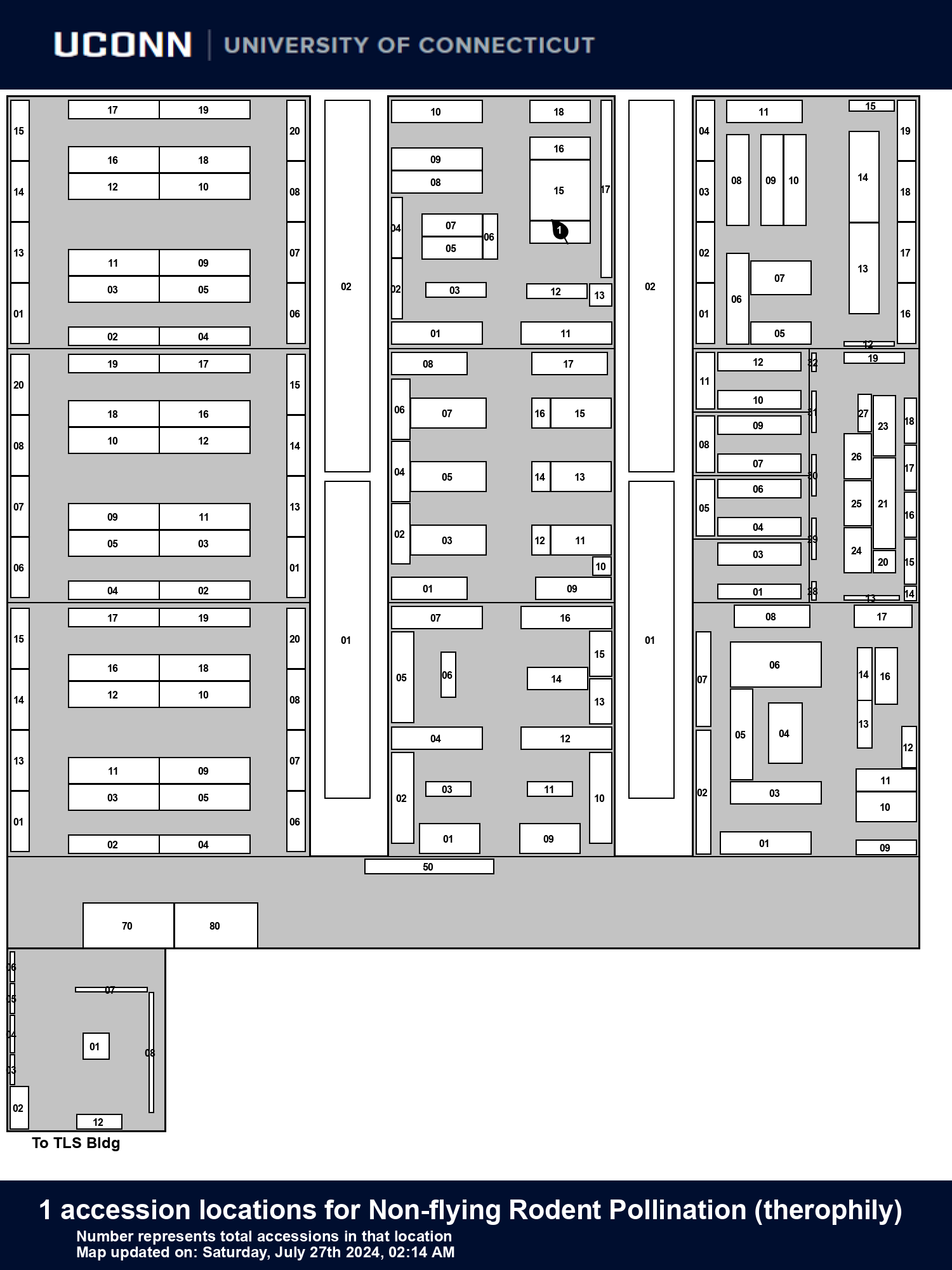SPECIAL COLLECTION:
Non-flying Rodent Pollination (therophily)
There are a couple of different groups of adaptations to pollination by non-flying rodents. The first group consists of low growing plants visited by ground-dwelling rodents and are characterized by flowers packed tightly into geoflorous and cryptic inflorescences, nocturnal anthesis and production of copious amounts of sugar-rich nectar and pollen as well as a musky odour. In the case of Massonia depressa, the nectar is particularly viscous and gelatinous which may be a means to discourage robbing by insects and facilitate lapping by rodents.
Greenhouse Locator Map:
A second group of rodent pollinators (excluding bats) includes a number of marsupials (incl. honey possums, sugar gliders) that visit Australian Proteaceae. These animals are more adapted to climbing around on the plants. A number of Banksia species feature this adaptation although our current accession, Banksia serrata, is wind pollinated and not known to be rodent pollinated.
Greenhouse Locator Map:

data regenerated on Wed, 23 Jul 2025 02:14:09 -0400
2 Accessions:
Number in parentheses references locator map icons
- {1} Banksia serrata - Old Man Banksia - Proteaceae

- {0} Massonia depressa - Hedgehog Lily - Asparagaceae

 W/C
W/C - WISHLIST ITEM: Androcymbium latifolium - (syn. Androcymbium pulchrum) - Colchicaceae
W/C = Wild Collected
 = Currently Flowering
= Currently Flowering = Image(s) Available
= Image(s) Available = map available for this accession
= map available for this accession
 = voucher(s) on file at CONN for this accession
= voucher(s) on file at CONN for this accession = accession added within past 90 days
= accession added within past 90 days

